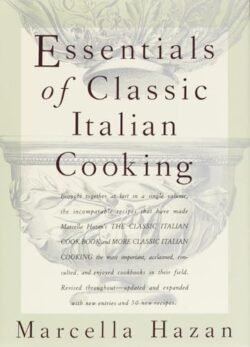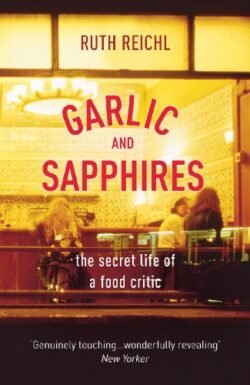“Betty Crocker’s Cookbook,” also known as “Betty Crocker’s Picture Cookbook,” first published in 1950, has become an iconic staple in American kitchens and is one of the most popular cookbooks in the United States. Created by the staff of the Betty Crocker Home Service Department at General Mills, the cookbook compiles a comprehensive collection of recipes ranging from appetizers and main dishes to desserts and baked goods. The book is known for its easy-to-follow recipes, practical cooking tips, and colorful illustrations and photographs that guide home cooks in preparing delicious meals. Over the decades, “Betty Crocker’s Cookbook” has been updated and reissued in numerous editions to reflect changing tastes, dietary guidelines, and cooking technologies, maintaining its relevance and popularity among generations of cooks. Character Analysis As a cookbook, “Betty Crocker’s Cookbook” does not contain narrative elements or characters but serves as a guide and resource for cooking and baking. The character of Betty Crocker, a fictional persona created by General Mills, represents a figure of culinary authority and homemaking expertise, embodying the collective knowledge of the company’s home economists and test kitchen chefs. Themes and Analysis Accessibility and Practicality: The cookbook emphasizes accessibility and practicality, aiming to make cooking approachable for beginners while offering depth and variety for more experienced cooks. American Culinary Tradition: It captures the essence of American culinary tradition, featuring classic recipes that have become staples in American households, alongside dishes that reflect the country’s diverse cultural influences. Adaptability and Innovation: Through its various editions, the cookbook demonstrates adaptability and innovation, incorporating new culinary trends, dietary considerations, and cooking methods to stay current with the times. “Betty Crocker’s Cookbook” remains a cherished resource for home cooks, offering a blend of timeless recipes and modern culinary guidance. Its enduring popularity is a testament to its ability to adapt to changing culinary landscapes while preserving the joy and tradition of home cooking. Whether a novice cook looking to learn the basics or an experienced chef seeking inspiration, readers will find valuable insights and delicious recipes within its pages. As a symbol of American home cooking, “Betty Crocker’s Cookbook” continues to inspire and bring families together around the dinner table, making it a must-have in every kitchen. If the summary caught your interest, Consider reading the full book on AbeBooks. Explore this book on AbeBooks
Fix-It and Forget-It Cookbook: Feasting with Your Slow Cooker
“Fix-It and Forget-It Cookbook: Feasting with Your Slow Cooker” by Phyllis Good is a beloved resource for anyone looking to make hearty, delicious meals with minimal effort. This comprehensive cookbook is filled with hundreds of slow cooker recipes that cater to a wide range of tastes and dietary needs. From soups and stews to desserts and main courses, Good provides simple instructions for creating flavorful dishes that require little to no supervision, making it perfect for busy individuals and families. Character Analysis As a cookbook, “Fix-It and Forget-It Cookbook” focuses on recipes rather than narrative characters. However, Phyllis Good can be seen as a guiding presence throughout the book, sharing her expertise and passion for slow cooking. Her approachable style and practical tips make slow cooking accessible to cooks of all skill levels. Phyllis Good as a Culinary Guide: Phyllis Good acts as an experienced guide through the world of slow cooking, offering readers the benefit of her extensive knowledge. Her recipes are designed to be straightforward and achievable, emphasizing the joy of creating delicious meals without the stress of complex cooking techniques. Good’s encouragement and clear instructions empower readers to explore new flavors and dishes confidently. Themes and Analysis Simplicity and Convenience: The cookbook celebrates the simplicity of using a slow cooker, showcasing how this kitchen appliance can transform the cooking process by making it more convenient and less time-consuming. Variety and Flexibility: Good highlights the versatility of slow cookers, providing recipes that range from traditional comfort foods to innovative dishes, showing that slow cooking can suit various dietary preferences and occasions. Community and Sharing: Many recipes in the book are sourced from home cooks across the country, reflecting a sense of community and the sharing of beloved family recipes. This aspect adds a personal touch to the cookbook, inviting readers to be part of a larger community of slow cooker enthusiasts. The “Fix-It and Forget-It Cookbook: Feasting with Your Slow Cooker” by Phyllis Good stands as an essential kitchen companion for those who value the simplicity and satisfaction of slow-cooked meals. With its wide array of recipes and Phyllis Good’s expert guidance, the cookbook demystifies slow cooking, making it an appealing option for seasoned cooks and beginners alike. Whether looking to prepare a cozy family dinner or a dish to share at a gathering, readers will find inspiration and practical advice within its pages, proving that delicious, wholesome meals can be created with ease and enjoyed by all.
Essentials of Classic Italian Cooking
“Essentials of Classic Italian Cooking” by Marcella Hazan is a comprehensive guide to Italian cuisine, combining two of her previous works, “The Classic Italian Cook Book” and “More Classic Italian Cooking.” This seminal cookbook is revered for its authentic and traditional approach to Italian cooking, presenting readers with a wide range of recipes that span the breadth of Italy’s culinary landscape. Hazan’s work is not only a recipe book but also an instructional guide, offering insights into the techniques, ingredients, and philosophy behind Italian cooking. Character Analysis While “Essentials of Classic Italian Cooking” does not feature narrative characters, Marcella Hazan herself serves as a guiding presence throughout the book. Her passion for Italian cuisine and dedication to authenticity and simplicity are evident in every recipe and piece of advice she offers. Marcella Hazan: Marcella Hazan, as the author and culinary guide, brings to life the essence of Italian cooking through her detailed instructions and personal anecdotes. Her approach to cooking emphasizes the importance of understanding ingredients and mastering basic techniques to create dishes that are both flavorful and true to their roots. Hazan’s philosophy of cooking is characterized by a respect for tradition, a focus on quality ingredients, and the belief that good food brings people together. Themes and Analysis Authenticity in Italian Cuisine: Hazan’s cookbook is a celebration of authentic Italian cooking, from classic pasta dishes to lesser-known regional specialties. Culinary Techniques and Ingredients: The book provides an in-depth look at the techniques and ingredients foundational to Italian cuisine, encouraging readers to appreciate the simplicity and quality of traditional Italian cooking. Cultural and Gastronomic Heritage: Beyond recipes, Hazan delves into the cultural significance of various dishes, offering readers a deeper understanding of Italian culinary history and its regional diversity. “Essentials of Classic Italian Cooking” by Marcella Hazan is an indispensable resource for anyone looking to explore the depth and richness of Italian cuisine. Hazan’s expert guidance, combined with her authentic recipes, makes this cookbook a cornerstone of culinary literature on Italian food. Whether a novice cook or a seasoned chef, readers will find invaluable knowledge and inspiration within its pages, making it a timeless reference for those who cherish the art of Italian cooking. Hazan’s legacy lives on through her recipes, teaching generations of cooks the beauty and simplicity of Italian cuisine. If the summary caught your interest, Consider reading the full book on AbeBooks. Explore this book on AbeBooks
Garlic And Sapphires
In “Garlic and Sapphires,” Reichl chronicles her tenure at The New York Times, providing a behind-the-scenes look at the lengths to which she would go to conceal her identity from the restaurants she reviewed. Reichl didn’t just use a pseudonym; she created elaborate personas, complete with detailed backstories, wardrobes, and makeup, transforming herself into a gallery of characters that could dine unnoticed. Each disguise allowed her to experience restaurants from the perspective of different patrons, revealing not just the quality of the food but also the service and the overall dining experience from varying viewpoints. The memoir is peppered with recipes and reviews, giving readers a taste of the culinary delights that Reichl encountered. Beyond the entertaining anecdotes of her incognito dining experiences, Reichl delves into deeper reflections on the nature of criticism, the complexities of the restaurant industry, and the ways food intersects with culture and personal identity. Themes and Analysis Identity and Perception: Reichl’s use of disguises serves as a metaphor for the multiple identities we all navigate, and how perceptions can change based on appearance and status. The Art of Criticism: The memoir explores the responsibilities of a critic and the impact of reviews on the livelihoods of those working in the restaurant industry. Food as a Cultural Connector: Reichl illustrates how food is more than sustenance; it’s a medium through which stories are shared, cultures are explored, and connections are made. “Garlic and Sapphires” is not just a memoir about the life of a food critic; it’s a narrative that captures the essence of food as a profound element of human experience. Ruth Reichl’s stories of disguise and discovery offer a unique lens on the world of fine dining, blending humor with heartfelt insights into the ways food shapes our lives and societies. The book encourages readers to think about the role of food in their own lives, the nature of judgment and taste, and the unseen dynamics of the restaurant world. Reichl’s journey is a compelling invitation to explore the richness of food and its capacity to connect us to ourselves and each other. If the summary caught your interest, Consider reading the full book on AbeBooks. Explore this book on AbeBooks




